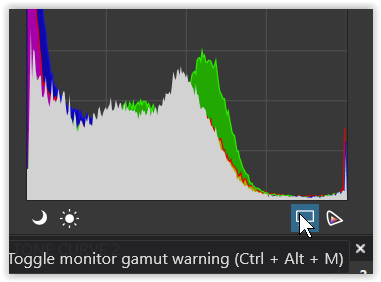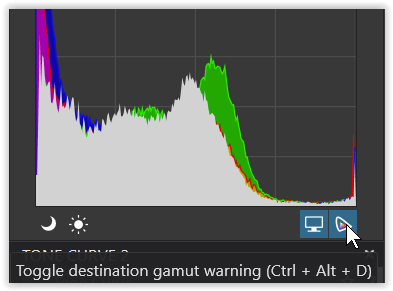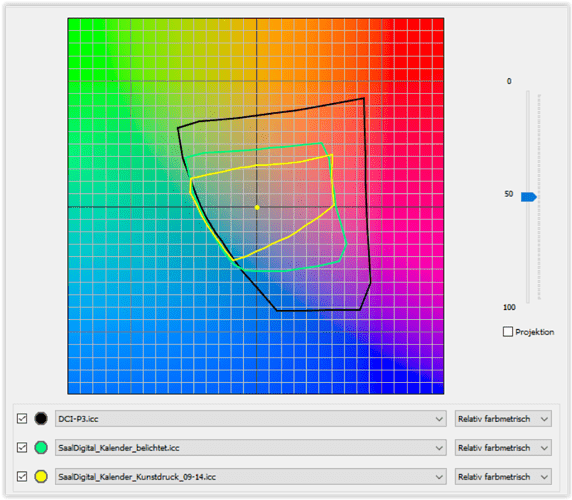Hi Beth,
when you have been happy in the past, just continue and keep working
in PL6’s Classic-Legacy mode,
which in additon to PL5 also offers the possibility to softproof.
The screenshot shows
- the generic DCI-P3 display profile (black)
- two paper profiles from a printing provider,
-
- for classic photo paper (green)
-
- and digital print (yellow) – especially the last one common for a printed calender.
In this example the paper profiles fits well into the DCI-P3 colour range,
while others may exceed that in the green-blue area
(negate the so-called rendering intent relative … for now).
Working with highly saturated colours needs some care – to not loose (too much) texture.
DxO’s Wide Gamut mode can handle all colours available in your pic, including those outside of what your display can render – and later the printed calender will show.
To get along, the MONITOR gamut warning

shown here in Windows OS
puts a blue overlay on your pic for the area with colours exceeding your display’s colour range.
The so-called ‘out-of-gamut’ colours have to be processed ‘to fit in’.
[ → PL6 Classic-Legacy takes care of that ]
BUT, your calender might show way less colours than your display is able too.
To visualize you can use the DESTINATION gamut warning (softproof on !)

shown here with both warnings on
which puts a red overlay for the area with colours exceeding the paper’s colour range.
This difference also has to be transferred ‘to fit in’.
[ → PL6 Classic-Legay does it … (well, almost) … ]
Suppose, more of interest is the softproof / the onscreen simulation how your pic will look like when exported.
-
When you have (imported) such a paper profile, you can simulate the expected output and optimize on screen to get a more suitable outcome*) – but export this ‘optimized’ version with the sRGB IEC61996-2.1 profile, as that is what the printing provider (usually) expects.
*) for the moment there is no paper & ink simulation yet -
Otherwise (and for social media) you can softproof with the sRGB IEC61996-2.1 profile to control how PL6 WG mode handled your pic’s colours for the sRGB output – and ‘correct’ before you export to sRGB.
[ → the softproof version highlighted you can use the export option ‘same as softproof’ // also in PL6’s Classic-Legacy mode ] -
Don’t let the all new DxO Wide Gamut mode overwhelm you. Simply try out what works best for you. Softproofing is a possibility to preview what you get, while it does not overcome the screen’s limitations.
In Colour space comparison – from practice I’ve shed some light on different monitor colour spaces vs. printing outputs (in section C. → my monitor’s colour space vs. my paper profiles).
Wolfgang
